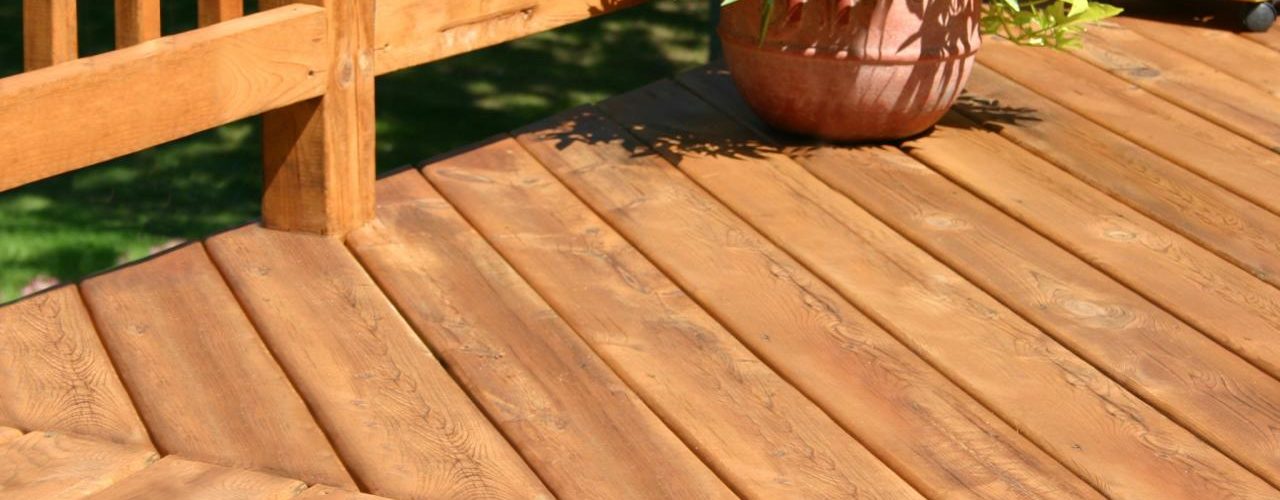Sealing a deck is a three-step process that begins with cleaning the deck, then preparing the surface and applying the sealer. The project can be accomplished using basic hand tools, along with a shop vacuum, and a paint roller or electric sprayer. The first step is to remove any furniture or other deck accessories in order to allow an unobstructed work area. Once this has been done the deck is ready to be cleaned.
Cleaning the Deck:
Thorough cleaning is necessary to remove dirt, mud and any debris, since the cleaner the surface, the more effective the sealer will be. Begin by using a long handle brush to loosen dirt and debris from the deck surface, and make certain to clean all corners and seams along the base of steps and planters. Next, clean the seams between the deck material using a long handle scraper turned on edge. If a scraper is not available, a square point screwdriver can be used to clear the seams.
A visual inspection of the seams and joints on the deck surface will disclose any areas that need more attention. Once this has been done, use a shop vacuum or broom to completely remove all loose debris and dust from the surface of the deck and the seams. The deck is now ready to be prepared for sealer.
Preparing the Deck:
Preparation involves setting any nails or deck screws that may have lifted over time. With new decks, this might be limited to a visual inspection of the deck fasteners. Nails that have risen can be set using a steel mallet and nail set. Screws can be driven to flush with the deck surface.
Next, use a pole sander with medium grit sandpaper to detail sand the entire surface. Sanding will open the wood grain and allow the sealer to thoroughly penetrate the deck material. Sanding can be done to a minimum as needed, or the entire surface can be belt sanded for a near-new appearance. Vacuum the sanding debris and detail clean all corners and seam free of dust prior to applying the sealer.
Sealing the Deck:
Once the sanding is complete, it is recommended that the sealer should be applied that same day. The freshly sanded deck may be vulnerable to moisture overnight, and this will reduce the effectiveness of the sealer. A water-based, clear sealer is the best, since it is free of toxic fumes that are inherent with petroleum based sealers. The sealer coat can be rolled or sprayed, and a uniform coat is the desired result.
When using a roller, pour the sealer into a 5-gallon bucket and apply it using a medium nap roller pad. A light bristle paintbrush works very well for detailing seams along the planters and steps. Begin in one corner of the deck, and work toward an open edge or other area that is accessible to an exit. Allow the water-based sealer to dry for a minimum of three hours before walking on the deck. Roller pads, brushes and buckets can be cleaned in water and re-used if desired.
In moist environments, such as beachfront or areas that receive heavy rainfall, it is suggested that two or more coats of sealer should be applied.



